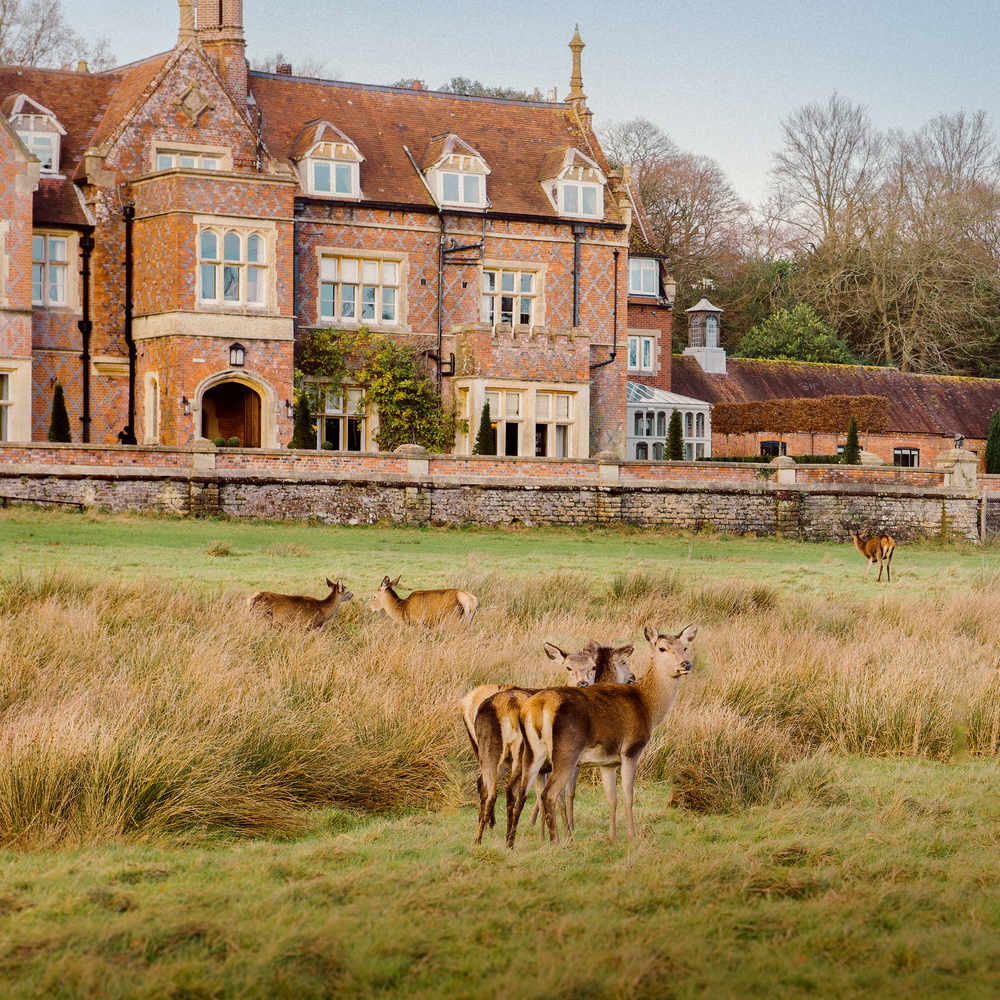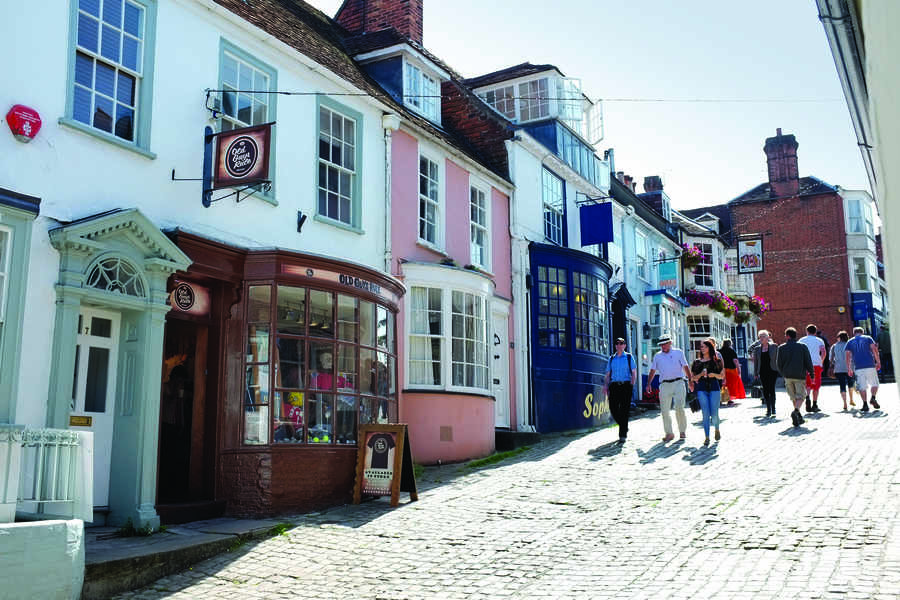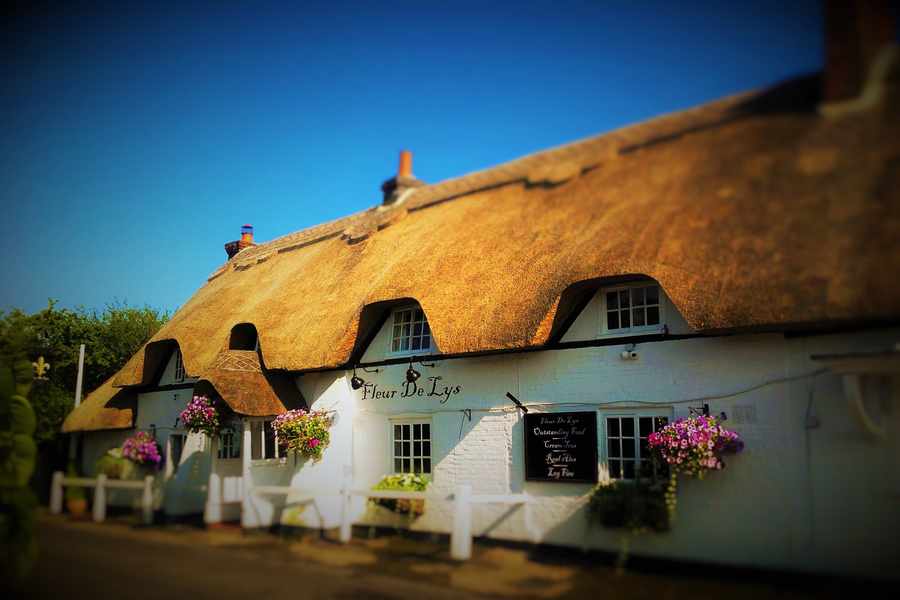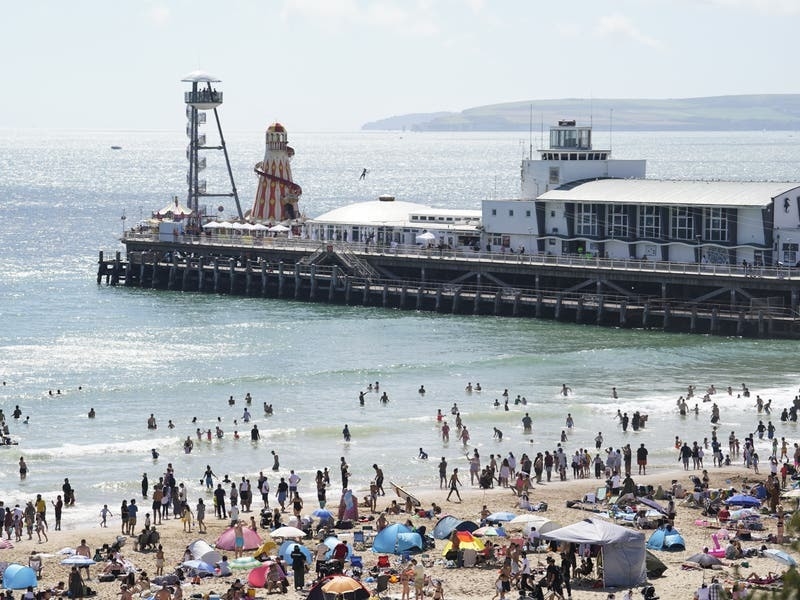HE just stood there in the middle of the road, looking at us glazedly through the windscreen. He didn’t move for five minutes. He looked slightly stoned, as if he had been on the local tanglefoot. Or Hampshire cider. Or maybe a nosebag of cider fruit scones.
Only a horse could cause a ten-car tailback in the New Forest, where the bottlenecks are the friendliest and most even-tempered in the world. History teaches you patience. Ponies and foals as well as pigs have the right of way in the south of England. Their commoners’ rights have been respectfully observed for centuries.
Most people visit the 219 square mile New Forest National Park (the smallest of the UK’s 15 parks and only officially designated in 2005) to go pony trekking, to see the wild horses, the rootling pigs and roaming donkeys, perhaps sight the rare mole cricket or European honey buzzard, retrace old mail coach routes on bespoke horse-drawn carriage tours or to visit the National Motor Museum at Beaulieu.


In between the burial barrows, tractor deer safaris and contracting chronic yacht envy passing boatyards and marinas, they taste mulled cider in Burley and Old Thumper and Boonwoggle ales at the Ringwood Brewery (ringwoodbrewery.co.uk).
They cycle, golf, walk the Monk’s Trail, scale Picket Hill, Telegraph Hill or Piper’s Wait (423 ft), enjoy the Georgian seaside market town of Lymington, Fordingbridge’s seven-arched medieval bridge crossing the Avon (you no longer get arrested for transporting venison over it) and the pre-Raphaelite church of St Michael and All Angels at Lyndhurst, where Alice Liddle – the inspiration for Lewis Carroll – is buried.
They visit the former royal playground for many reasons.
In my case it was to reclaim my fiefdom, protect my manorial interests and lay siege to and exploit my sporting rights in a vintage pub.
The parish of Boldre near Brockenhurst has HMS Hood and Robert Southey connections. The Hood’s last admiral lived there and Southey’s wife was born there. It is also a Pilley stronghold. And, although there is a Pilley off Junction 36 of the MI near Barnsley, the Hampshire Pilley is where I wanted to maximise my hereditary rights.

The beautifully thatched and tastefully refurbed Fleur de Lys (fleurdelys-pilley.co.uk) in Pilley Street which leads on to Pilley Hill past Pilley Stores is in the heart of the New Forest’s famous heathlands and broadleaf woodlands. It’s the oldest pub in the Forest.
Pilley gets three mentions in the Domesday book and the Pilley family have been allegedly associated with the area since 1316. There has been a pub on the site since the 11th century. A list of landlords goes back to 1498.
It is now a gastropub serving up excellent food and traditional New Forest log fire warmth and hospitality. ‘Have you booked?’ Vanessa asked as I entered with my entourage of attendants – wife and heir.
I gave my name expecting the landlady to go down on her knees and swoon, ‘My lord’. But there was very little ceremony of homage and fealty from my vassal.
To ascertain my rights and preserve and protect hers, she consulted her iPad rather than the feudal register and mistook me for the Chief Planning Officer of Jersey who shares my name.
Vanessa Cooper, whose relatives owned Rowleys Jewellery in
St Helier, admitted that I was the first Pilley to attempt to repossess Pilley for a long time.
Heads turned and you could see the locals were worried about their smallholdings. Realising I had a rival claimant, I forswore my birthright and renounced a barstool, settling instead for his master’s table by the fire and a complimentary Orchard Reveller.

Vanessa and chef Steve Hurst’s ‘open house home’ gets its name from a local 13th century church window depicting the coat of arms of the Dauphin of France. It has a growing reputation as one of the best places to eat in the area.
A former royal lodge, Chewton Glen in New Milton (chewtonglen.com) used to be the best place to stay. Now it’s the newly-refurbished five-acre listed Burley Manor (burleymanor.com), 20 miles from Southampton airport and slightly less from Bournemouth. You pull the curtains in the morning to see a herd of deer. They don’t startle easily.
Matthew the general manager looks after you royally, as do all his staff and executive chef James Forman whose menu is Mediterranean-British (wild boar cutlet, Provencal beef daube, Cypriot-style split chicken and a Marseille-style fish stew). The signature dessert is a tapas board of fig and almond tart with spiced cardamom, chocolate and rum fondue and roasted plums in orange yoghurt with amaretto zabaglione and hazelnut praline.
There’s an outside pool and a wellness centre (spa) is planned. Hacks process past the hotel from the nearby riding stables.
The manor goes back to 1212. In 1388, Sir Simon de Burley, a Knight of the Garter and friend of Edward III’s son Edward (the Black Prince), was executed for treason and his lands confiscated by the crown. Hampshire cricketer, archetypally florid-faced country squire and mutton-chopped huntsman Sir Thomas Ridge lived there in the 18th century before Brigadier-General John Carnac MP and former Commander-in-Chief of India, moved in.
The house was then demolished and the current one (with the inscription above the entrance ‘Speed the parting guest, welcome the coming friend’) built in 1852 by Colonel William Clement Drake Esdaile, a magistrate and ‘verderer’ (custodian) of the unenclosed pasturelands of the New Forest.

Now it’s all cosy fabrics, complimentary Temple Spa toiletries (perfect for the saddlesore), ‘heritage’ prints, heritage ornaments, heritage fittings, wood-roasted heritage vegetables, ‘newby’ teas and tisanes (herb teas) and local ‘neo-heritage’ products like Conker Gin made by ‘disgruntled ex-surveyor’ Rupert Holloway. With partner Fred Gamber, who gave up a career in clinical science, he runs from an old laundry Dorset’s first and so far only gin distillery (conkerspirit.co.uk) in Southbourne, a suburb of Bournemouth.
Down the road from Burley Manor in Pound Lane is the Cider Pantry and New Forest Cider Farm (newforestcider.co.uk) where Barry, Sue and Marie-Louise Topp serve up handcrafted scones, roast nutty pannage pork and straight from the whisky barrel tastings of 7.4 per cent Kington Black apple Snake Catcher Scrumpy.
Barry, a former mackerel fisherman in Cornwall, has revived traditional cider-making in the New Forest. He stages an annual steam-pressing weekend. The family also has a stall in London’s Borough Market.
In the stable gallery, while introducing you to sparkling Cider Bouche made by the champagne method, in stupefying detail he tells you his family history and about 19th century adder-catcher Harry ‘Brusher’ Mills who supplied London Zoo and believed boiled adder was good for rheumatism.
The Topps top you up with scrumpy and fill you in on the history of the historic forest.

The New Forest was created by William I in 1079. Many were controversially evicted so the king could ‘pursue hart’. Once known as Ytene, it became ‘a harbour for wild beasts… and affordeth great variety of Game where his Majesty oft-times withdraws himself for his divertisement’.
For more on the New Forest go to the New Forest website.
Barry also slips in a story about some of his pigs enjoying the privilege of ‘pannage’ too much and gatecrashing a wedding.
Commoners still have the right to collect fuel wood (‘estovers’) and fuel (‘turbary’), dig clay, graze their livestock and turn out their pigs to hoover up acorns and beechnuts (‘pannage’).
Acorns aren’t poisonous to pigs. So the pigs are doing the New Forest a great ecological service. And taste all the better for it.
A Pilley or a non-Pilley, your manorial rights retained or not, it’s a privilege to visit the Forest. You end the day standing by the roadside doing a very good impersonation of a slightly stoned animal.
And wearing that rather mottled complexion of a Gloucester Old Spot.







